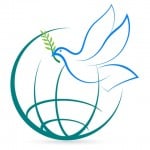
According to UNICEF at least 16 children have been killed and 60 seriously injured since last month’s outbreak of violence in Bangui, the capital of the Central African Republic (C.A.R.). At least two of these children were beheaded and one child was severely mutilated.
According to the UN, 1,000 people have been killed and about 370,000 have been displaced in armed conflict in Bangui in December. More and more children are being recruited into armed groups, and they are also being directly targeted in atrocious revenge attacks. During the past month, the UN said the number of child soldiers in C.A.R. had more than doubled to 6,000 as fighting escalated.
The armed conflict in the Central African Republic started in December 2012 and led to the overthrow of President Francois Bozize in March by Séléka (also called the Séléka CPSK-CPJP-UFDR). The armed group is comprised of an alliance of several militia groups that were active in the C.A.R. The coup plunged the C.A.R. into chaos. Looting and attacks became widespread; state buildings, ministries, and schools were looted and in some cases destroyed altogether.
Former Séléka rebel leader Michel Djotodia, who is now president, has not been able to control ex-rebel militias, who were not incorporated into the army after the coup of March 2013. These former Séléka rebels, who are Muslim, are battling Christian self-defense groups known as Anti-Balaka.
Since the coup of March 2013 overthrowing President Francois Bozize, uncontrolled elements of Séléka and unknown armed groups have been carrying out attacks against the civilian population. By September 2013 fighting had extended to other parts of the country including Bouar in the west towards Cameroon and to the east of the capital in Damara. By October 2013 the UN Security Council approved logistical support to the African Union peacekeeping force (AFISM-CAR) on the ground and permitted French troops to control the airport. By November 2013, peacekeeping forces reported having witnessed summary executions and mass displacement as whole communities, terrified by the brutality of the armed groups, fled their homes.
During the last few months the fighting has been relentless, and according to UNICEF, the results are grim:
Over 1000 people dead
495,000 internally displaced people
1 million people are food insecure
1.6 million people in need of assistance (total number of inhabitants: 4.6m)
60% of health structures have been destroyed since December 2012
90% of medical facilities have no more stock
And now the children are being targeted.
Targeted attacks against children constitute an obvious violation of international humanitarian, human rights law, as well as the laws of armed conflict.
So, what to do?
Should the international community intervene?
If so, how should it be done?
